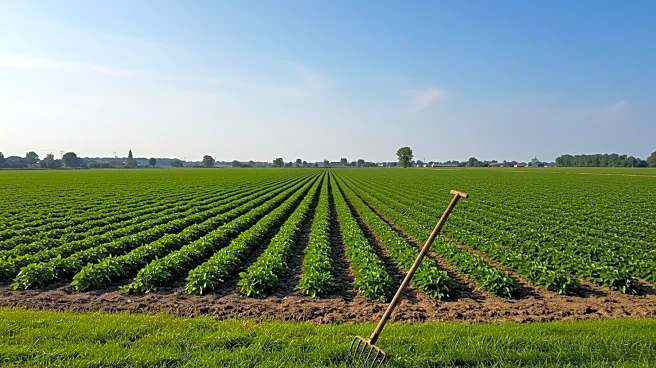What's Happening?
A North Carolina apple grower is highlighting significant challenges in securing labor for fruit and vegetable farms, emphasizing the need for a more streamlined process. The grower, whose operation produces approximately six and a half million pounds of apples annually, relies heavily on skilled labor to ensure timely and quality harvests. Currently, the H2A visa program, which is intended to facilitate the hiring of foreign agricultural workers, is fraught with complexities and delays. The grower proposes two main improvements: consolidating oversight to a single agency to reduce confusion and implementing a centralized digital system to simplify the application process. These changes aim to reduce the reliance on costly farm labor contractors and expedite approvals, which are crucial during short harvest windows.
Why It's Important?
The labor shortages in agriculture have far-reaching implications for the U.S. economy and food supply. As production costs rise, the availability of reliable labor becomes increasingly critical for maintaining the viability of farms, particularly those producing specialty crops like apples. The current inefficiencies in the H2A visa program can lead to reduced harvests and income for farmers, ultimately affecting the supply of fresh produce in markets. By advocating for a more efficient system, the grower is addressing a key bottleneck that could enhance productivity and stabilize the agricultural sector. This issue not only impacts farmers but also consumers and the broader food supply chain, highlighting the need for policy reforms that support agricultural labor needs.
What's Next?
The grower encourages fellow farmers to engage in advocacy efforts to push for these changes. This includes making calls, sending emails, attending meetings, and supporting advocacy groups. By voicing their experiences and challenges, farmers can help inform lawmakers and drive the development of practical solutions. If successful, these efforts could lead to a more efficient H2A program, ensuring a steady flow of labor and protecting the agricultural output. The proposed changes could also set a precedent for other sectors facing similar labor challenges, potentially influencing broader labor policy reforms.













